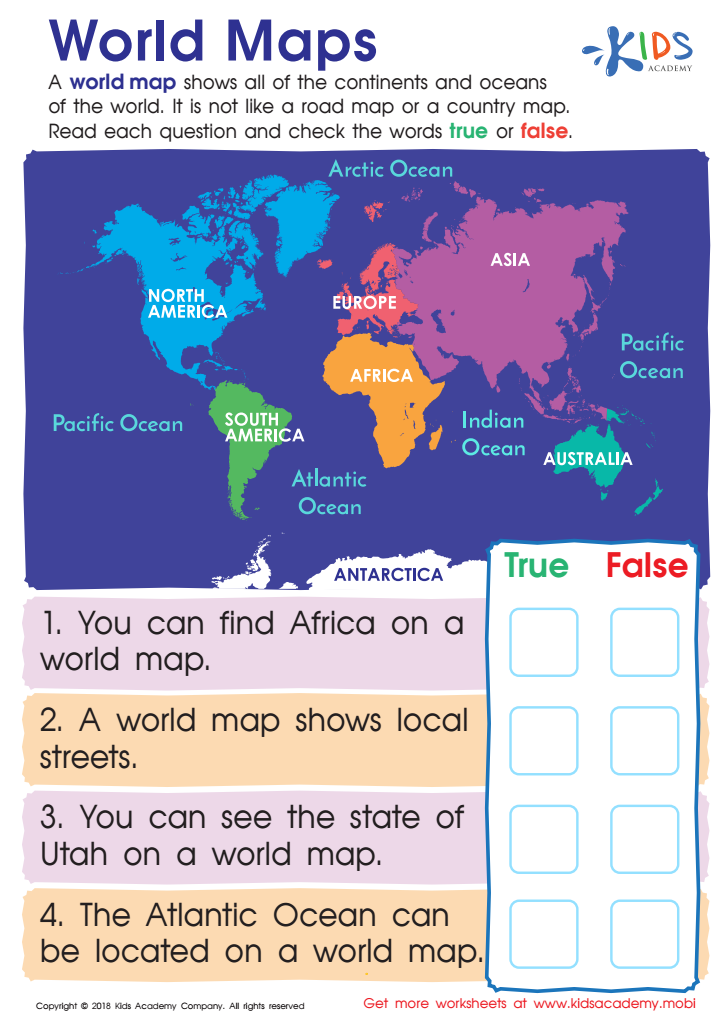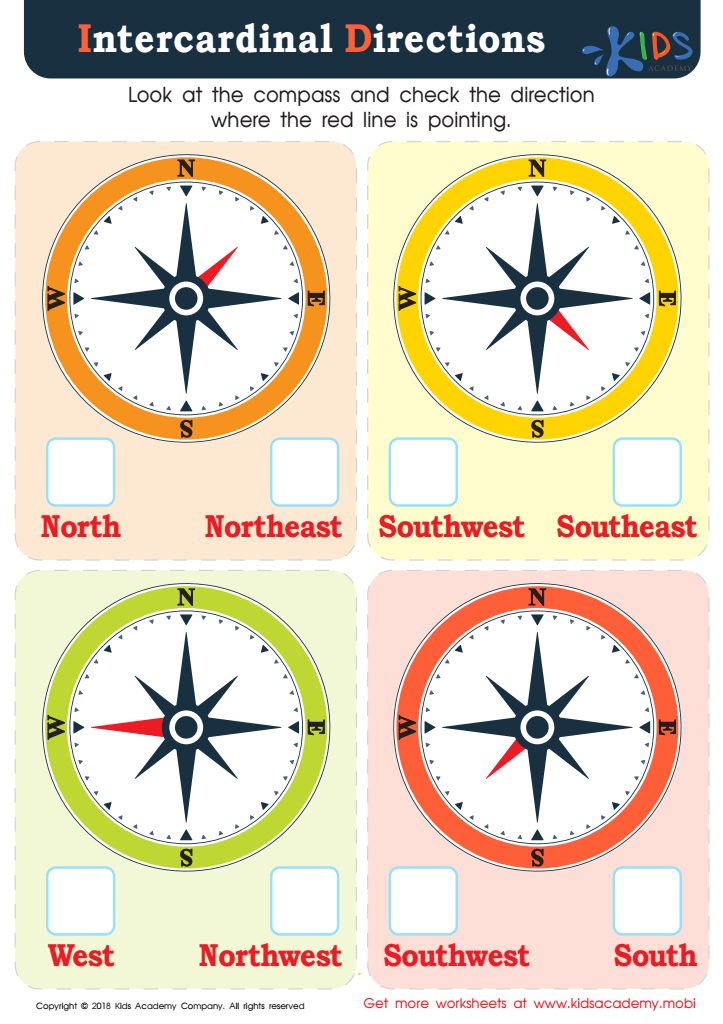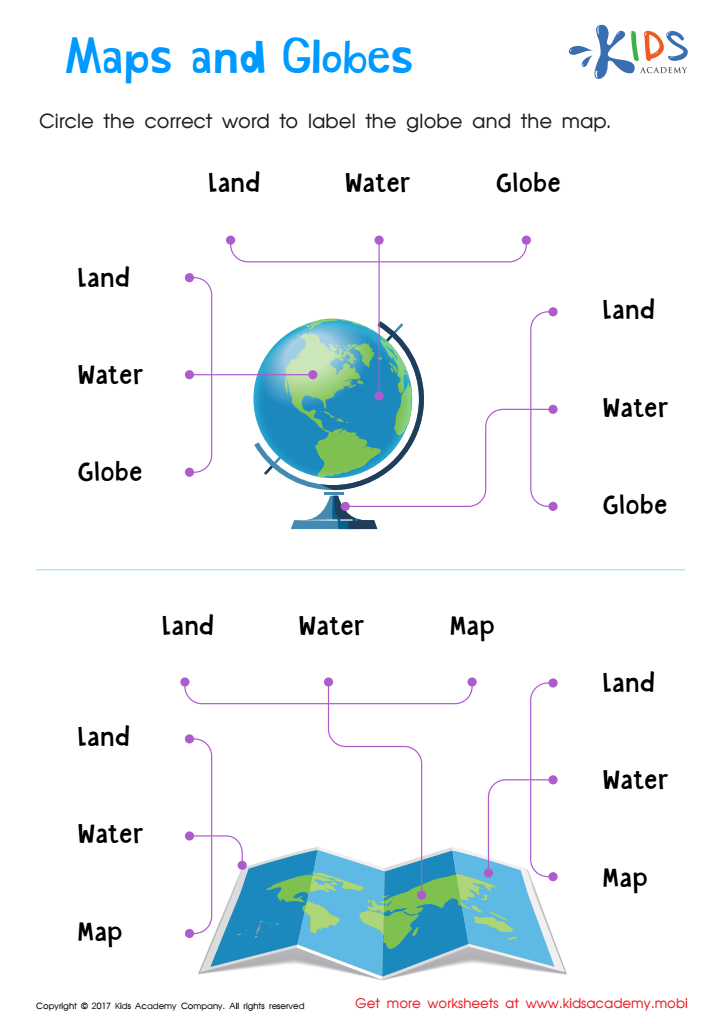Map reading Normal Worksheets for Ages 7-9
3 filtered results
-
From - To
Explore our engaging Map Reading Normal Worksheets designed specifically for children ages 7-9! These worksheets emphasize essential map skills, helping young learners understand how to interpret symbols, directions, and various map features. With a mix of interactive activities and practical exercises, these resources foster critical thinking and spatial awareness. Perfect for classrooms or at-home learning, our worksheets make geography fun and accessible. Encourage your child to hone their navigation skills and discover the world around them in an educational and enjoyable way. Get started today and watch their confidence grow as they become map-reading experts!


World Maps Worksheet


Intercardinal Directions Worksheet
Map reading is a vital skill for children aged 7-9, and parents and teachers should prioritize its development for several reasons. First, it enhances spatial awareness, helping children understand their surroundings and navigate their environment effectively. This foundational skill is crucial not only for everyday life but also for subjects like geography and mathematics.
Second, map reading promotes critical thinking and problem-solving. Children learn to interpret symbols, scale, and directions, which encourages them to analyze information and make informed decisions. This cognitive engagement supports overall academic growth.
Moreover, map reading fosters independence and self-reliance. As children become adept at reading maps, they gain confidence in their navigational skills, allowing them to explore new places with assurance. This sense of independence can also facilitate outdoor activities and family adventures.
Finally, map reading nurtures curiosity and a sense of adventure. It encourages children to explore their local communities and broader environments, sparking interest in geography, cultures, and history. By prioritizing map reading, parents and teachers can empower children with essential life skills, promote continuous learning, and support their overall development.

 Assign to My Students
Assign to My Students














